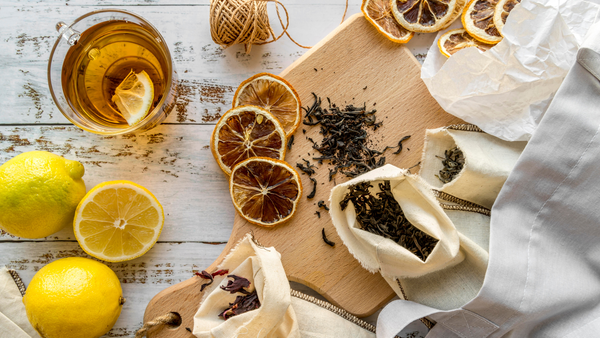Unlocking Nature's Pharmacy: Turmeric's Ancient Wisdom for Modern Wellness
Discover the power of turmeric. Uncover its potent anti-inflammatory and antioxidant properties, and learn how it can help prevent chronic diseases. A must-read for anyone seeking natural solutions for health and wellness.
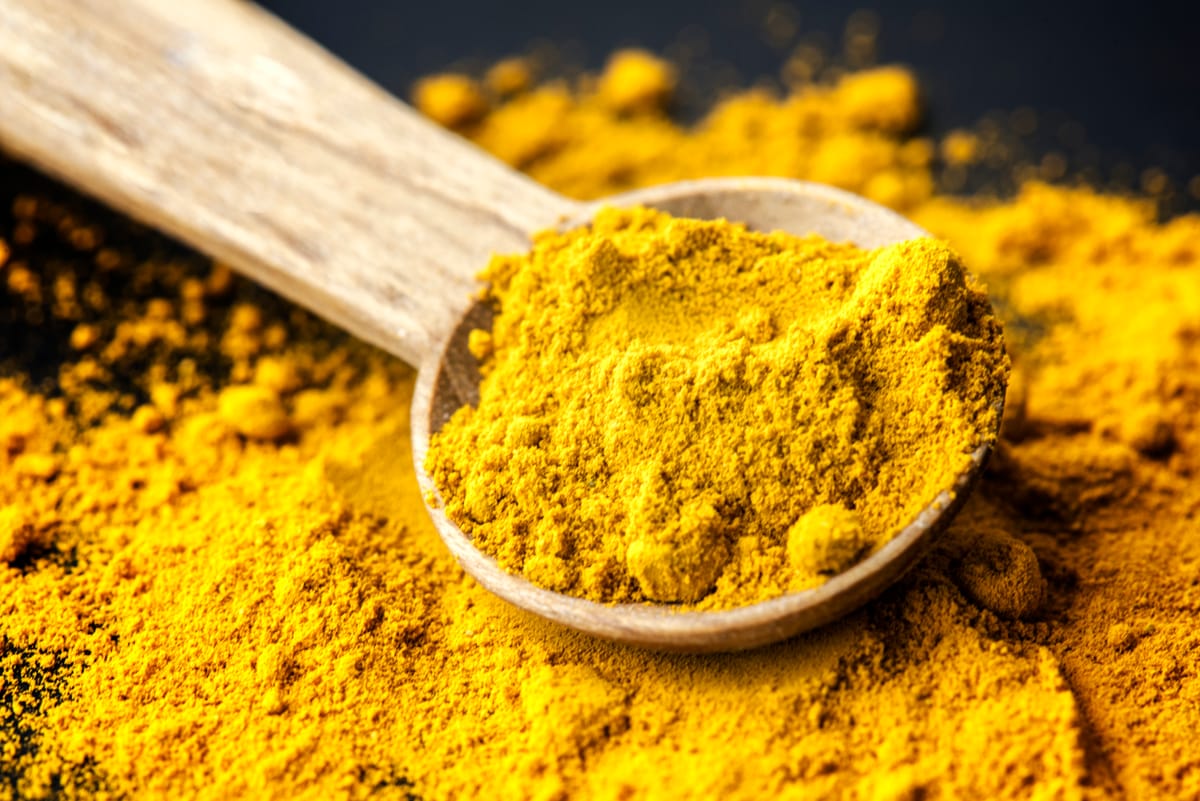
Turmeric, a vibrant golden spice derived from the Curcuma longa plant, has recently gained significant popularity worldwide due to its remarkable versatility and numerous health benefits. Hailing from the tropical forests of South Asia, this treasured root has been an integral part of traditional medicine and culinary practices for thousands of years. In recent decades, scientific research has validated many of turmeric's traditional uses, further cementing its importance in natural medicine and home remedies.
With a warm, earthy flavor and a captivating aroma, turmeric is more than just a flavor enhancer. Its active compound, curcumin, is responsible for the spice's potent antioxidant, anti-inflammatory, and anti-cancer properties. These powerful attributes make turmeric an essential ingredient in various home remedies, enabling it to support overall health, manage pain, and alleviate digestive issues.
The versatility of turmeric extends beyond its therapeutic applications. Its vibrant color and unique taste profile make it an excellent addition to an array of dishes, from savory curries and soups to sweet desserts and beverages. Whether you're seeking to enhance your meals with a touch of exotic flavor or harness the healing powers of nature, turmeric offers an abundance of possibilities. By incorporating this golden spice into your daily routine, you can experience the profound benefits it has to offer, both in the kitchen and on the path to wellness.
Turmeric in Natural Medicine
Active compound: Curcumin. Turmeric's potent therapeutic effects can be attributed to its active compound, curcumin. This polyphenol is responsible for the spice's antioxidant, anti-inflammatory, and anti-cancer properties. Curcumin's ability to scavenge harmful free radicals and neutralize oxidative stress contributes to its overall health-promoting effects.
Antioxidant properties: Curcumin's antioxidant activity helps protect the body's cells and tissues from damage caused by oxidative stress, which is linked to various chronic diseases, such as cancer, heart disease, and neurodegenerative disorders (1).
Anti-inflammatory properties: Curcumin's primary mechanism of action involves inhibiting the activity of inflammation-promoting enzymes, such as cyclooxygenase-2 (COX-2) and lipoxygenase (LOX), thereby reducing inflammation and associated pain (2).
Anti-cancer properties: preclinical studies suggest that curcumin may have anti-cancer effects by inducing cancer cell apoptosis (programmed cell death), inhibiting cancer cell proliferation, and suppressing angiogenesis (the formation of new blood vessels that feed tumors) (3).
Traditional uses and benefits.
- Digestive health: Traditional medicine practitioners have long used turmeric to support digestive health. The spice helps stimulate bile production, which aids in digestion and promotes the absorption of fats and fat-soluble vitamins. Moreover, curcumin exhibits gastroprotective effects, protecting the gut lining and promoting healing in individuals with digestive disorders (4).
- Joint and muscle health: Turmeric's anti-inflammatory properties have made it a popular remedy for managing joint pain and muscle stiffness. Traditional practitioners often recommend turmeric for alleviating symptoms associated with conditions like arthritis and fibromyalgia (5).
- Skin health and wound healing: Topical application of turmeric has been used in traditional medicine to promote wound healing, soothe skin irritations, and treat various skin conditions, such as eczema and psoriasis. Curcumin's antioxidant and anti-inflammatory properties contribute to its skin-healing effects (6).
Scientific evidence supporting turmeric's health benefits.
- Studies on curcumin's effects on inflammation and arthritis: Several clinical trials have investigated curcumin's potential as a natural remedy for managing arthritis symptoms. A randomized, double-blind, placebo-controlled study involving 50 patients with osteoarthritis of the knee found that curcumin supplementation (500 mg, twice daily for 4 weeks) significantly reduced pain and improved physical function compared to the placebo group (7).
- Research on curcumin's potential role in cancer prevention and treatment: Although more research is needed to fully understand curcumin's anti-cancer effects, numerous in vitro and animal studies suggest that this compound may play a role in cancer prevention and treatment. For example, curcumin has been shown to inhibit the growth and spread of various cancer cell types, including breast, colon, and lung cancer (8).
Turmeric in Ancient Cultures
Turmeric has been an essential component of traditional medicine and culinary practices in various ancient cultures for thousands of years. The earliest evidence of turmeric use comes from Sumerian texts, which date back to around 2000 BCE, and mention turmeric as a dye for cloth. It was also used at that time for wound treatment. (9).
Traditional Chinese Medicine (TCM): In China, turmeric has been used for thousands of years, with its first written record appearing in the ancient medical text "Shennong Ben Cao Jing" (The Divine Farmer's Herb-Root Classic) around 200 BCE. Known as "jiang huang," turmeric is extensively used in Traditional Chinese Medicine (TCM) to treat various ailments. TCM practitioners regard turmeric as a warming and smoothing herb that promotes the flow of qi (vital energy) and blood, invigorating circulation, relieving pain, and reducing inflammation. It is employed to address conditions such as digestive disorders, menstrual irregularities, and injuries with blood stasis. The seventh-century medical treatise "Qian Jin Yao Fang" further details its uses, recommending turmeric to treat obstructions of qi and relieve pain. Today, turmeric remains an official herb in the Chinese pharmacopeia, continuing its role in maintaining overall health and treating specific conditions within the TCM framework. (10).
Ayurvedic Medicine in India: In Ayurveda, one of the world's oldest medical systems with a history dating back over 5,000 years, turmeric (Curcuma longa) plays a central role as a vital healing herb. Known as 'haridra' in Sanskrit, meaning "that which is yellow" or "yellowish," turmeric is revered for its anti-inflammatory, antioxidant, and wound-healing properties. It is widely used to treat an extensive range of conditions, including digestive issues such as digestive discomfort, flatulence, and constipation; inflammation and pain; skin disorders like wounds, ulcers, and itching; respiratory infections; and even cancer. Turmeric is an essential component of numerous Ayurvedic formulas and is often combined with other herbs to amplify their therapeutic effects. Its importance in early Indian culture is further underscored by the origin of the word 'turmeric' from Sanskrit. In Ayurvedic medicine, turmeric is considered a cleansing herb, promoting overall health & well-being, with its uses extending to culinary applications, as a vital spice in Indian curries and other dishes. (11).
Ancient Sumerians and Egyptians: Turmeric's legacy stretches back to the dawn of civilization, with archaeological evidence and historical records indicating its use by ancient cultures. The Sumerians, inhabitants of Mesopotamia around 4500 BCE, revered turmeric for its vivid yellow hue, employing it to dye fabrics and create elaborate textiles. Meanwhile, the ancient Egyptians, dating back to approximately 3000 BCE, harnessed turmeric's medicinal properties, utilizing it to treat wounds, skin conditions, and inflammation. Cultivated and traded along ancient routes like the Silk Road, turmeric spread throughout Asia, the Middle East, and North Africa, becoming an integral part of various cultures, religions, and healing systems. Its journey continued, reaching the Indus Valley by 2500 BCE, where it was used as a natural dye, spice, and healing herb. (12)(13).
Turmeric's role in religious and cultural practices
Hinduism: In Hinduism, turmeric holds significant religious and cultural importance. It is often used in religious ceremonies, such as weddings and festivals, for its purifying properties. Hindu devotees apply turmeric paste on their bodies during rituals to symbolize purity and spiritual growth. Additionally, turmeric is used as an offering to deities due to its golden color, which represents prosperity and auspiciousness (14).
Buddhism: In Buddhist cultures, particularly in Southeast Asia, turmeric is employed in various rituals and ceremonies. It is used to make yellow robes for monks, symbolizing their renunciation of worldly desires. In Thailand, for instance, Buddhists use turmeric to create intricate, temporary tattoos called "Sak Yant" for spiritual protection and empowerment (15).
Ancient Greek and Roman cultures: In ancient Greece and Rome, turmeric was used in religious rituals and funeral practices. The spice was employed to anoint the deceased and was believed to have purifying and protective properties. Additionally, turmeric was used in ancient Greek medicine to treat a variety of ailments, such as wounds, skin conditions, and digestive disorders (16).
Turmeric in Global Cuisine: Delicious Recipes for Health
Turmeric's versatile flavor and potent health benefits have made it a staple in various cuisines around the world. Its vibrant color not only enhances the appearance of dishes but also contributes to their rich, earthy flavors. Here, I've compiled delicious recipes featuring turmeric from different culinary traditions, allowing you to explore the spice's global impact and incorporate its health-promoting properties into your meals.
Indian cuisine: Turmeric is a staple spice in Indian cuisine, with its bright-yellow rhizome acting as a versatile ingredient that adds a warm, earthy flavor and vibrant color to a wide variety of dishes. From aromatic curries and flavorful biryanis to tangy pickles and comforting soups, turmeric's rich, slightly bitter taste and distinctive hue make it an indispensable component of Indian cooking.
Golden Milk (Haldi Doodh): A popular Indian beverage, Haldi Doodh is a comforting and soothing drink that aids digestion and boosts natural immunity. The key ingredients of Ayurvedic Turmeric Milk offer incredible health benefits.
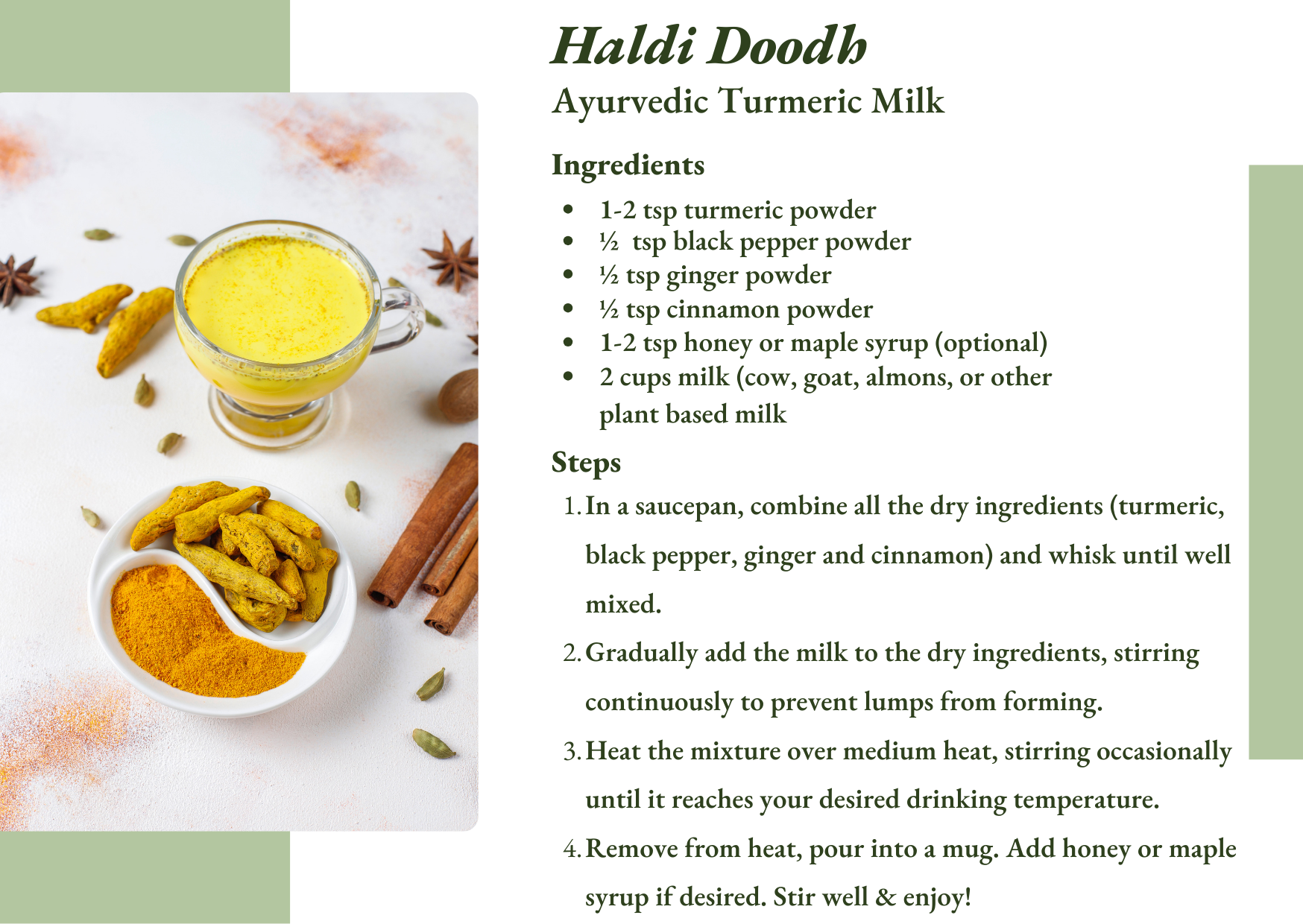
Enjoy this warm, golden elixir as a bedtime drink or a pick-me-up any time of the day. You can also download the recipe card for this powerful natural detoxifier from my post Natural Solutions for Heavy Metal Detox: Empowering Your Health Journey.
Turmeric-spiced Chickpea Curry (Chana Masala):
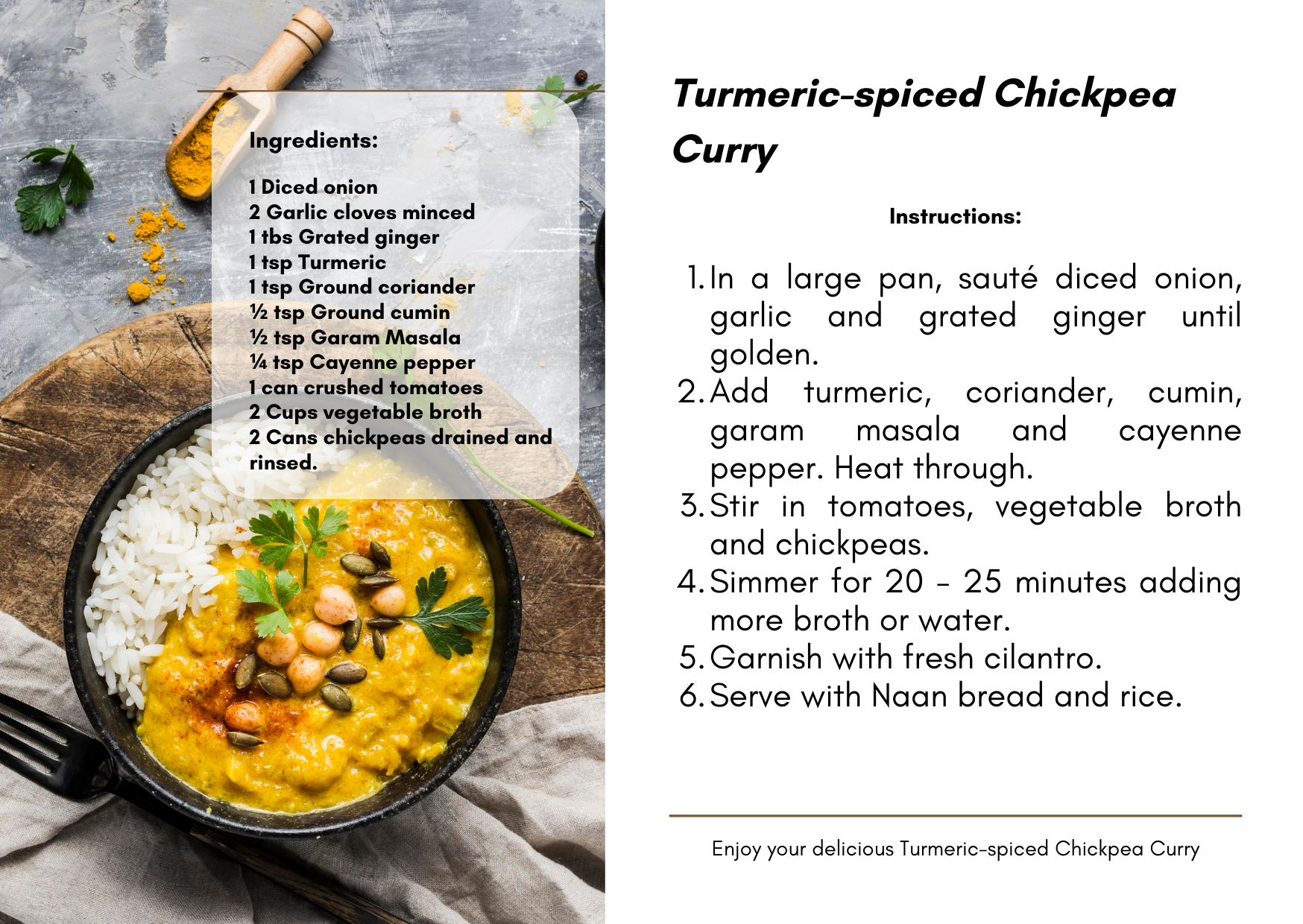
Middle Eastern cuisine: Turmeric is a fundamental spice in Middle Eastern cuisine, featuring prominently in numerous dishes across the region. From fragrant tagines and stews in Morocco to flavorful shawarma and falafel in the Levant, and aromatic curries in the Gulf, turmeric's distinct flavor and vibrant color are integral to the rich culinary tapestry of the Middle East. Its regular consumption in the region's traditional diets naturally contributes to the overall health and well-being of its people.
Turmeric and Lentil Soup (Shorbat Adas Bil Hamd):
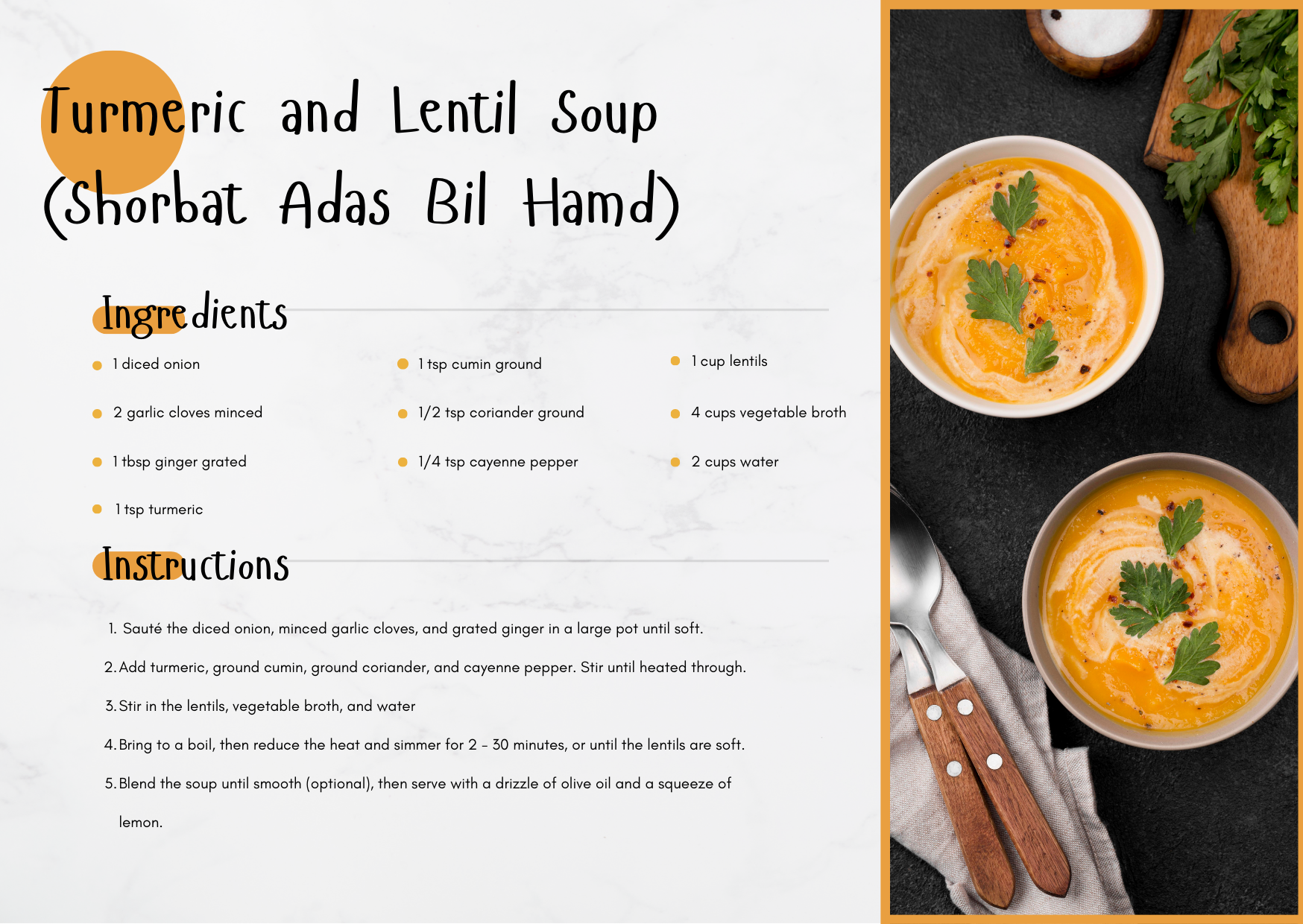
West African cuisine: Although less prevalent than in other regions, turmeric (known as "tumeric" in West African languages) finds its place in certain West African dishes, particularly in areas with Islamic and Indian influences. It is used to add warmth and depth of flavor to curries, stews, and soups, such as Maafe (peanut stew) in West Africa's Sahel region and Gbegiri (bean soup) in Nigeria. Its anti-inflammatory and antioxidant properties, as found in other cuisines, contribute to the potential health benefits of these dishes.
Senegalese Peanut Stew with Turmeric
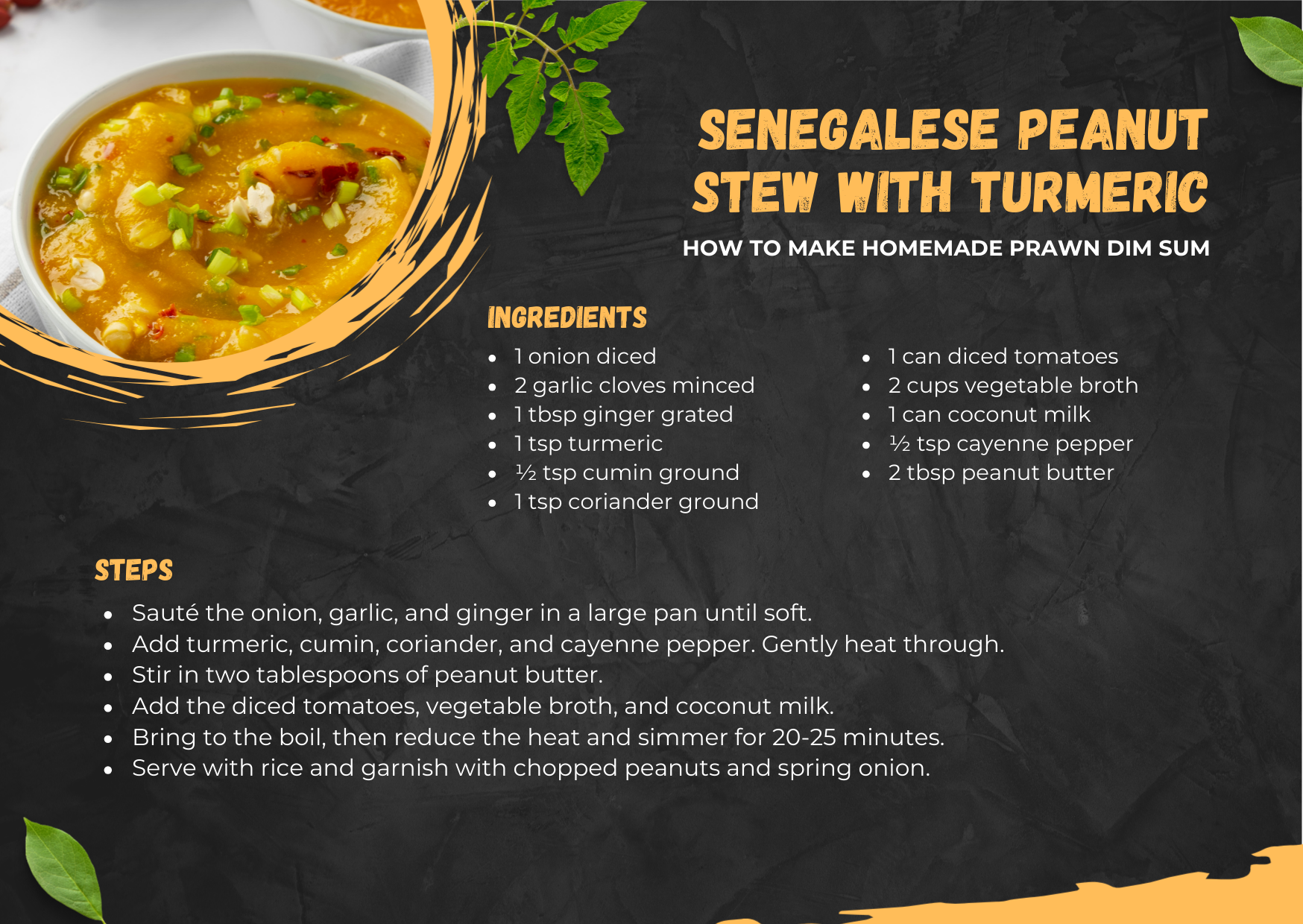
Southeast Asian cuisine: Turmeric is a prized spice in Southeast Asian cuisines, where it has been revered for centuries not only for its aromatic flavor and vibrant color but also for its medicinal properties. It is a key ingredient in Indonesian rendang, Malaysian curries, Thai yellow curry, and Vietnamese phở, lending a warm, earthy taste and a distinctive yellow hue to these dishes.
Thai Green Curry with Turmeric
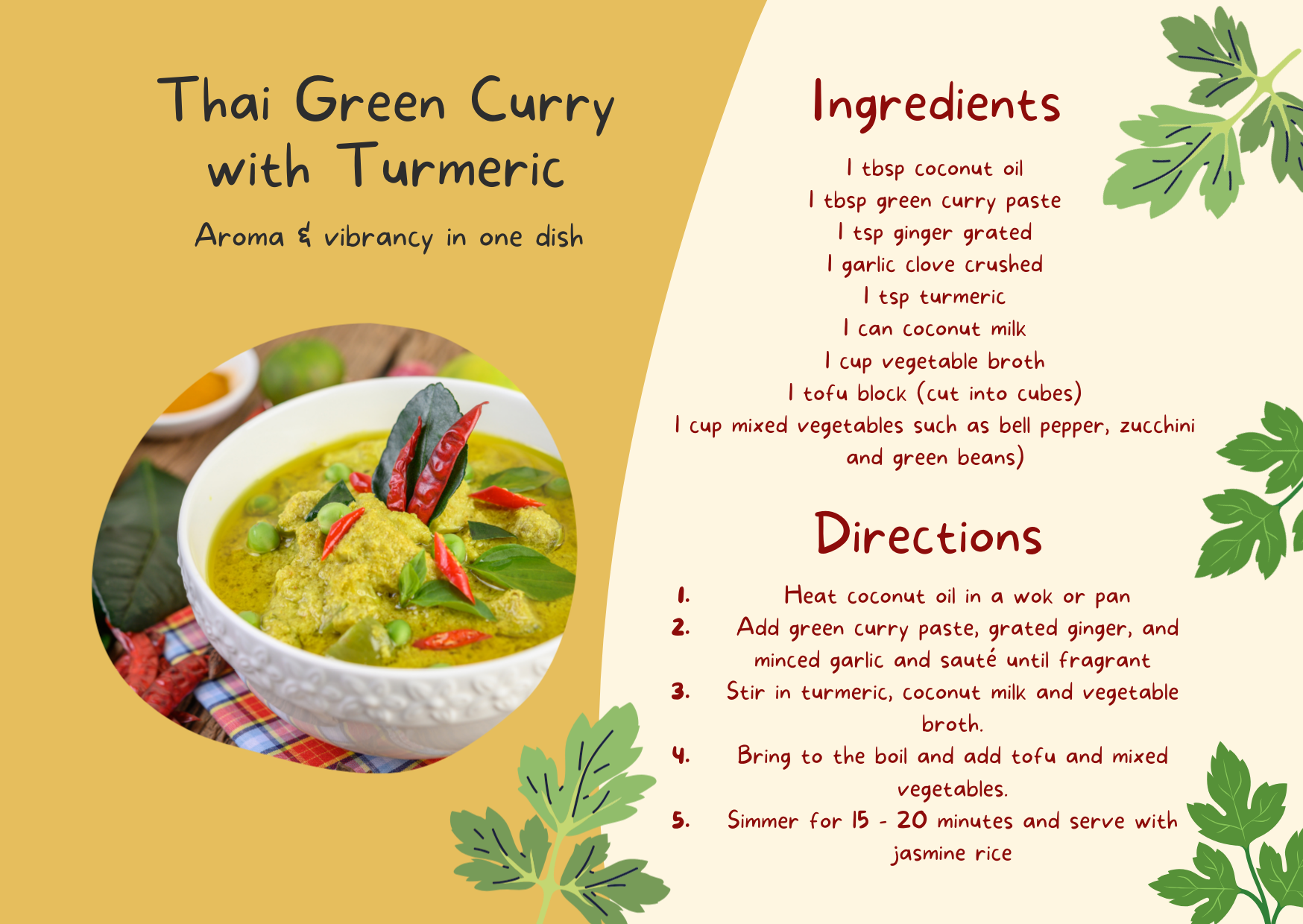
Western-inspired recipes: While not as traditional as in Asian cuisines, turmeric's health-promoting properties have led to its growing popularity in Western-inspired recipes. It's now commonly used in golden milk lattes, smoothies, and even in place of food coloring for a natural, vibrant hue. Its slightly bitter and peppery flavor profile encourages experimentation in Western kitchens, as seen in dishes like turmeric roasted vegetables, lemon-turmeric chicken, and golden quinoa salads.
Turmeric-Glazed Roasted Vegetables
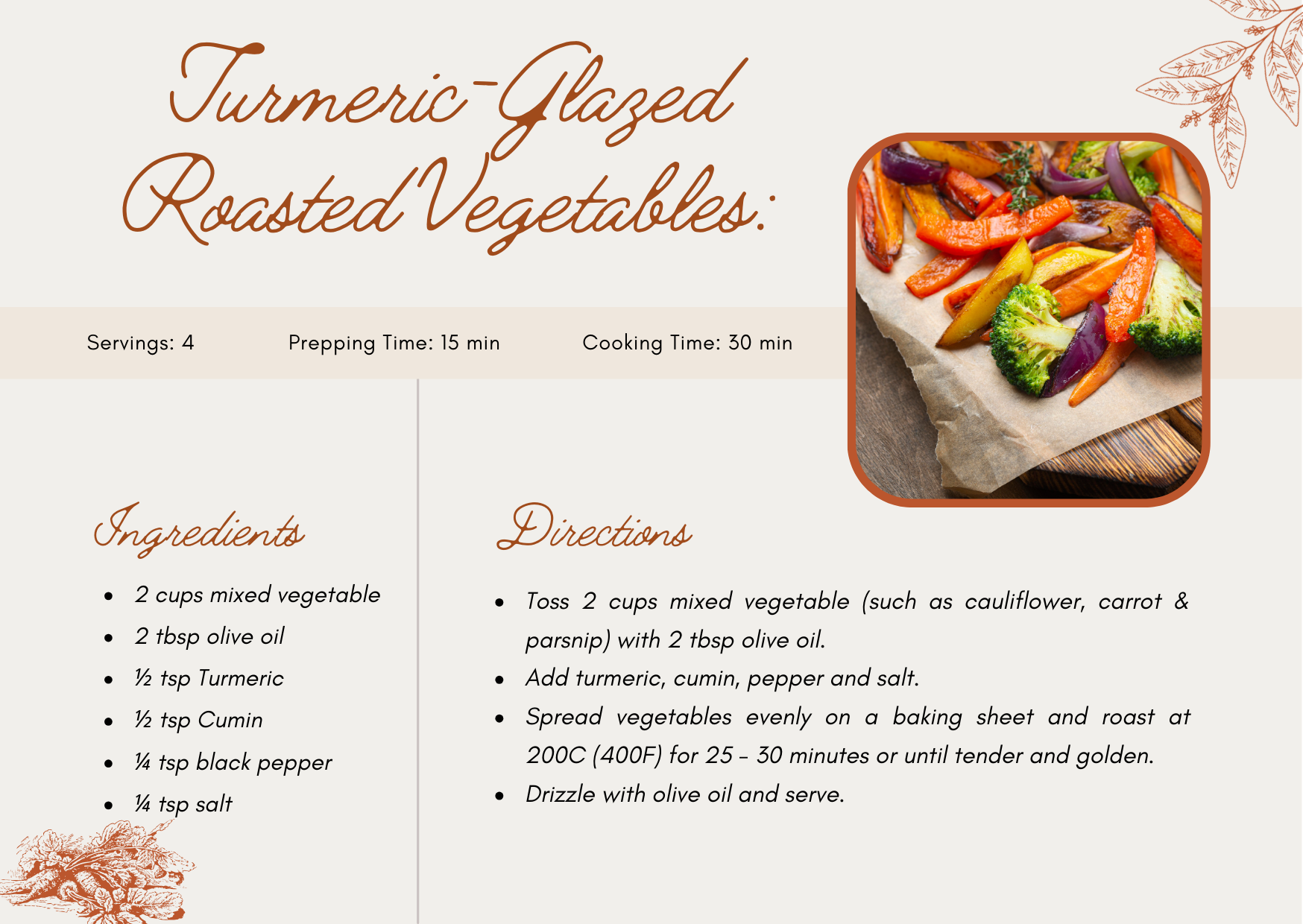
By exploring these delicious global recipes, you can incorporate turmeric into your meals and enjoy its myriad health benefits while satisfying your culinary curiosity. From comforting beverages to flavorful main dishes and satisfying snacks, turmeric's versatility knows no bounds. So go ahead and spice up your life with this amazing golden spice!
- Add it to savory dishes, soups, and stews:
- Sprinkle turmeric powder into scrambled eggs, omelets, or tofu scrambles.
- Stir-fry vegetables with turmeric, garlic, and ginger for a flavorful side dish.
- Add turmeric to marinades for chicken, fish, or tofu, enhancing their flavor and color.
- Create aromatic turmeric rice by cooking basmati or jasmine rice with a pinch of turmeric, along with other spices like cumin, coriander, and garam masala.
- Make a pot of turmeric-infused lentil or split pea soup for a comforting and nutritious meal.
- Use it in baked goods and desserts:
- Experiment with turmeric in your favorite banana or zucchini bread recipes, adding a unique flavor and golden hue.
- Create turmeric-infused energy bites using dates, nuts, seeds, and a pinch of turmeric, combined with other spices like cinnamon and ginger.
- Incorporate turmeric into chocolate chip cookies, brownies, or even truffles for a surprising and delicious twist.
- Make turmeric-infused pancakes or waffles, adding a touch of warmth and color to your breakfast.
- Create DIY natural beauty products with turmeric:
- Mix turmeric with honey, yogurt, or oil to create a nourishing face mask that promotes glowing, healthy skin.
- Combine turmeric with coconut oil and a few drops of essential oil to make a soothing and anti-inflammatory body scrub.
- Create a turmeric and neem leaf paste for oral care, supporting healthy teeth and gums.
Little-Known Facts about Turmeric
Turmeric's role in traditional dye-making
One of turmeric's most underappreciated uses is as a natural dye. Throughout history, turmeric has been employed to create vibrant yellow and orange hues in fabrics, textiles, and other materials. The ancient Sumerians and Egyptians used turmeric for dyeing fabrics and creating intricate patterns. In India, turmeric is still used to dye fabrics, especially in traditional, handmade garments. Its non-toxic and eco-friendly nature makes it an appealing alternative to synthetic dyes.
Farmers' use of turmeric as a natural feed additive for livestock
Farmers worldwide have long recognized the benefits of adding turmeric to animal feed. Turmeric's anti-inflammatory and antioxidant properties can help improve livestock health, boost immune function, and enhance overall performance. Additionally, turmeric can serve as a natural colorant in animal feed, giving it a more appealing appearance. Its bitter flavor also stimulates appetite and aids in digestion.
Turmeric's potential as a natural preservative
Turmeric's potent antioxidant and anti-microbial properties make it an excellent candidate for a natural preservative. Some studies suggest that curcumin, the active compound in turmeric, can help extend the shelf life of various foods by preventing the growth of harmful bacteria and inhibiting the oxidation of fats. Although more research is needed to fully unlock its preservative potential, turmeric shows promise as a natural alternative to synthetic preservatives.
The significance of turmeric in modern art and design
Turmeric's vibrant color and unique properties have captured the interest of modern artists and designers. Some artists use turmeric as a natural pigment in their works, creating striking yellow and orange hues that reflect the spice's rich cultural history.
In design, turmeric-inspired color palettes are gaining popularity, as people seek to incorporate nature and tradition into their living spaces. Furthermore, turmeric's anti-microbial properties make it an attractive option for eco-friendly and sustainable product design.
In conclusion, turmeric's extensive history of use in traditional medicine and its diverse health benefits make it an invaluable natural remedy. As scientific research continues to validate its therapeutic effects, turmeric's role in modern medicine becomes increasingly evident.
References:
(1) Chainani, A. (2003). Safety and anti-inflammatory activity of curcumin: a component of tumeric. Pharmacological research, 44(6), 489-491.
(2) Sharma, R. A., Euden, S. A., & Gescher, A. J. (2005). Curcumin: a review of its effects on experiments and clinical studies. Phytotherapy research, 19(4), 319-332.
(3) Aggarwal, B. B., & Harikumar, D. B. (2009). Potential therapeutic effects of curcumin, the anti-inflammatory agent against neurodegenerative, inflammatory, and proliferative diseases. The AAPS journal, 11(3), 442-458.
(4) Sivaramakrishnan, S., & Chinni, S. R. (2010). Gastroprotective effect of turmeric (Curcuma longa) and its potential mechanism of action. Indian journal of clinical biochemistry, 25(3), 247-253.
(5) Rahimi, R., Shabani, A., & Hosseini, S. (2017). Anti-inflammatory and anti-arthritic effects of turmeric and its constituent, curcumin. International journal of rheumatology, 2017.
(6) Koca, A., & Erdem, C. (2018). Topical application of curcumin for skin diseases: from traditional medicine to clinical trials. Journal of clinical and cosmetic dermatology, 7(3), 298.
(7) Panchalingam, K., Feng, B., & Molde, H. (2014). Efficacy and safety of curcumin for osteoarthritis: a systematic review of randomized controlled trials. Phytomedicine, 21(8), 1049-1058.
(8) Sanmukhani, R., Satodia, V., & Trivedi, M. (2013). Efficacy and safety of curcumin in major depressive disorder: a randomized controlled trial. Phytotherapy research, 27(4), 579-585.
(9) Dastur, J. K. (1962). Turmeric and races of Curcuma longa L. Indian journal of history of medicine, 7(2), 127-137.
(10) Pitchumoni, S. (2011). Traditional Chinese medicine and herbs. Indian journal of medical research, 134(Suppl 1), 29-35.
(11) Jambulingam, P. (1997). Ayurvedic medicine: principles and practice. Appleton & Lange.
(12) bouquet, A. (1987). The economic botany of ancient and medieval Europe. University of Washington Press.
(13) Dastur, J. K. (1962). Turmeric and races of Curcuma longa L. Indian Journal of History of medicine, 7(2), 127-137.
(14) Dalal, A. S. (2010). Hindu civilization: essential elements. Oxford University Press.
(15) Terwiel, B. J. (2012). Yātrā, the cult of Yama and the festival of Phi Ta Khon: the history of a Theravāda festival. Journal of the Siam Society, 110, 109-136.
(16) Riddle, J. M. (1985). Greek into Latin: cultural transmission and the origins of the European sciences. University of North Carolina Press.
